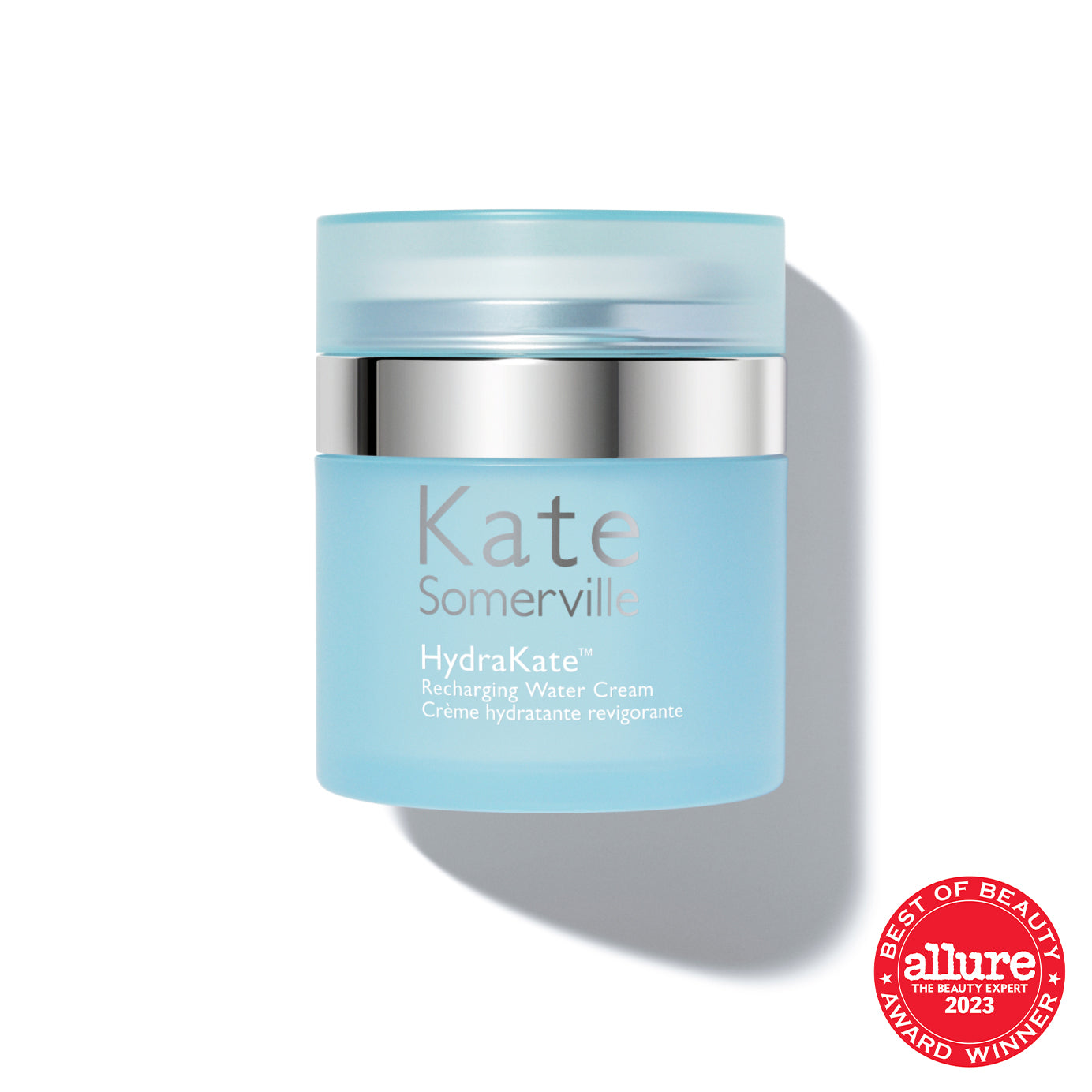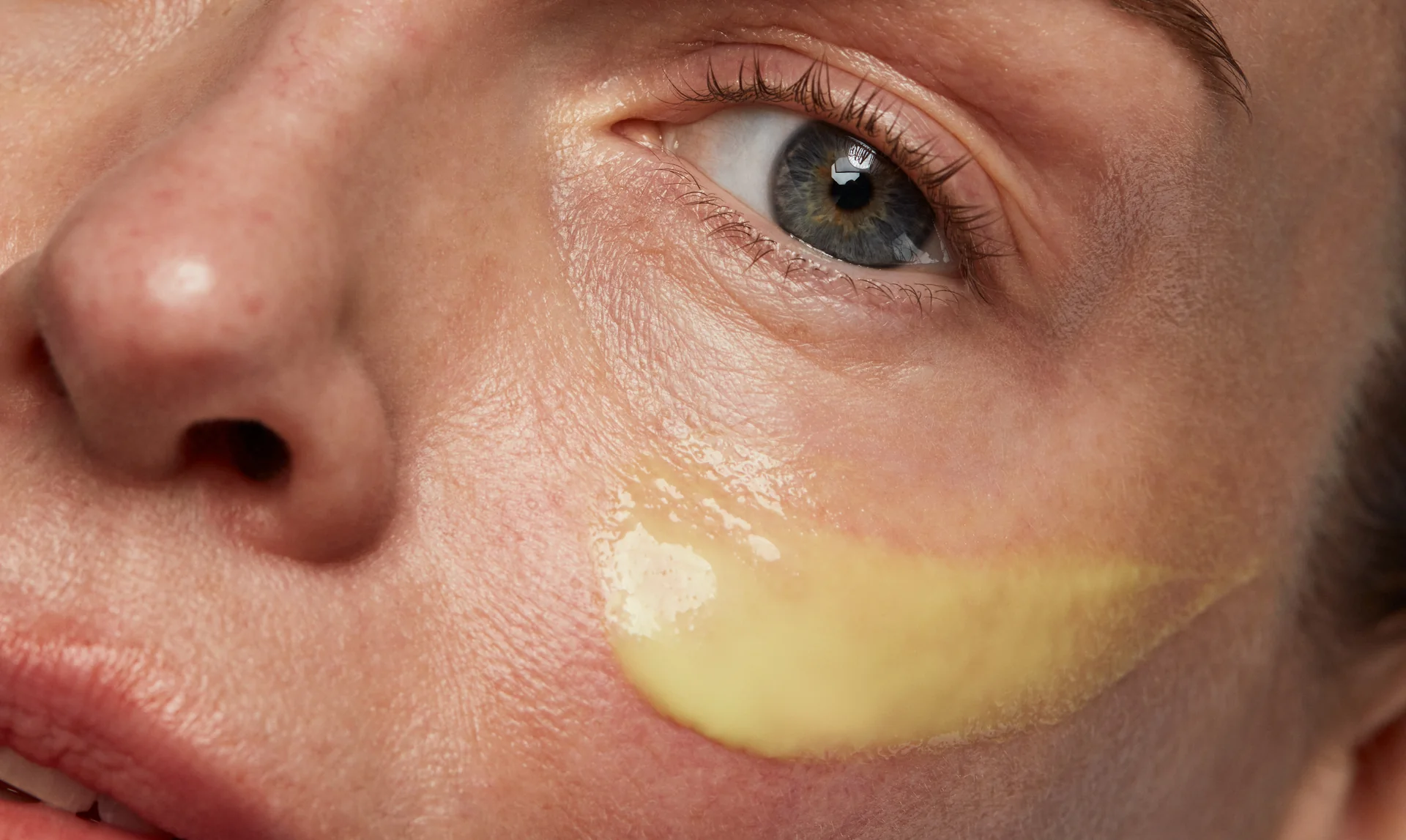Perhaps you’ve been there before—you wake up, get out of bed, start your skin care routine, and begin to notice the usual suspects: a dry patch, tightness, irritation, flaking, cracks, wrinkles, and fine lines. You reach for a certain product out of instinct and go about your day. But by the time night rolls around, your skin still feels…just not right.
The problem could be that you never determined whether your skin was dehydrated (deprived of water) or dry (deprived of oils). While both terms may feel and sound the same, they’re not interchangeable.
We think it’s time to kick that not-quite-right feeling to the curb by exploring the differences between dehydrated skin vs dry skin. Our Skin Health Experts uncovered the causes behind each and how you can adjust your skin care arsenal to fit the unique needs of your skin.
What Causes Dehydration?
Dehydration (think, hydro) is precisely what it sounds like: It’s what happens when your skin lacks water, an integral ingredient for maintaining its strength, vibrance, and elasticity. Most people are bound to experience skin dehydration at some point in their lives, especially if they’re not guzzling down as much water as they ought to be.
Whether the local humidity is at an all-time high or your daily cups of coffee far outnumber your daily glasses of water, your skin could wind up paying the price as result. To sidestep the less-than-glamorous effects of epidermal dehydration, studies suggest keeping a close eye on your fluid intake. You may also want to consider working a hydrating, water-based product into your daily skin care routine (we’ll clue you in on a couple of our favorites below).
What Causes Dryness?
The dry skin type, on the other hand, is the result of a lack of natural oil. This is a genetic skin type that is not a skin condition like dehydration. In other words, if you’re no stranger to dry skin, it’s likely because you were born this way! Importantly, dry skin types can be more likely to experience skin dehydration and should pay particular attention to the products they’re reaching for on their vanity.
The good news? We have a skincare routine for dry skin, and even oily skin, or somewhere in between. You can help keep your complexion happy and healthy by using our recommended products and ingredients tailored toward your specific skin type.
3 Tips for Treating Dry and Dehydrated Skin
Whether you’ve been graced with dry or dehydrated skin (or both), there’s plenty you can do to tackle your unique needs. While a few extra sips of water certainly won’t hurt, you may need to call in for back-up.
Back-up, in this case, might mean embracing help from thoughtfully developed products like a moisturizer and hydrating serum. Below, we’ll dive into our top three tips for dehydrated skin and dry skin types.
Tip #1: Moisturize–The Right Way
A good moisturizer is often the first (and best) line of defense against skin dehydration and dryness. Here are a couple of our top picks based on your skin type:
- For dehydrated skin, the water-based KateCeuticals™ Total Repair Cream is a must. It combines hyaluronic acid with salicylic acid to moisturize, smooth, and potentially strengthen skin in as little as one week.
- For naturally dry skin, we recommend the Kate Somerville Dry Skin Saver. Thanks to Japanese kelp, oat kernel flour, and other natural ingredients, it aims to replenish moisture and restore your skin barrier.
Tip #2: Say Yes to Serums
Whether you know the difference between hydration vs moisture improvement, your skin will need both of them. If your skin care routine doesn’t already include a hydrating serum, now’s the time to start. That’s because these highly concentrated products can deliver oil and hydration to the places that need it most.
Among our go-to favorites, you’ll find:
- The Wrinkle Warrior® 2-in-1 Plumping Moisturize + Serum, which aims to deliver transformative hydration to dehydrated skin that’s in need of a seriously dewy boost.
- If your dry skin is begging for more moisture and oil, it could find a cure in the DeliKate® Recovery Serum, a lightweight, soothing serum featuring cucumber seed oil, omega, and ceramides.
Tip #3: Incorporate a Few Lifestyle Changes
Beyond keeping the right products handy in your bathroom cabinets, you can also embrace a few lifestyle changes that aim to keep your skin well fed, including:
- Limiting your shower time to under 10 minutes so your skin retains its natural oil
- Eating a well-balanced diet—especially foods that are high in vitamin E and omega-3 fatty acids (a key player when it come to combatting dry skin)
- Keep a humidifier running in your home to alleviate dry indoor areas
Start Your Skincare Routine Off Right with Kate Somerville
Behind every luminous, hydrated skin complexion is a skin care routine that’s got its back. While it can be challenging to sift through shelves and shelves of products, it’s worth it when you find the one that’s a near-perfect match for your skin.
Whatever your skin type or condition, Kate Somerville’s Skin Health Experts offer a variety of trusted moisturizers, cleansers, serums, and other products to meet your individual needs. Explore our moisture-powered treatment line to find more products designed for dry and dehydrated skin.
Happy, healthy skin is our mission—and we won’t quit until you find the right fit.
Sources:
Mayo Clinic. Dry Skin– Symptoms and Causes. https://www.mayoclinic.org/diseases-conditions/dry-skin/symptoms-causes/syc-20353885
PubMed. Does dietary fluid intake affect skin hydration in healthy humans? A systematic literature review.
https://pubmed.ncbi.nlm.nih.gov/29392767/
PubMed. Fishy business: effect of omega-3 fatty acids on zinc transporters and free zinc availability in human neuronal cells.











